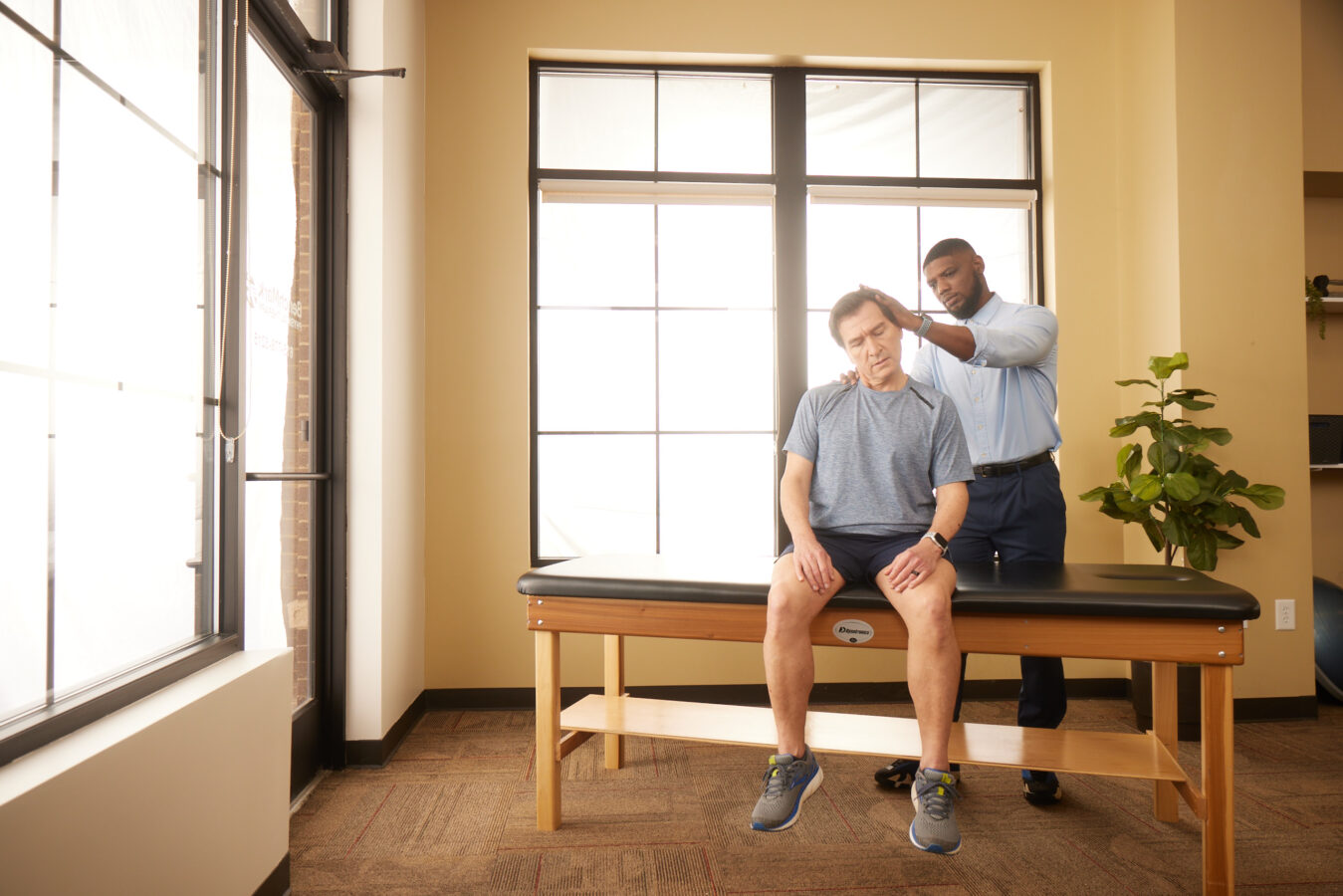
If it seems like your shoulders are up to your ears by the end of a long day, you are not alone. Tension in the neck and shoulders is a common complaint. Most people have experienced tight or stiff neck or shoulders at some point. Some have chronic neck and shoulder tension that leads to other health problems and severely impacts their quality of life.
Neck and shoulder tension should never be ignored because it can cause headaches, sleep problems, and compromise the range of motion and function in the upper body. In this article, we will explore the leading causes of tension in the neck and shoulders and discuss the benefits of physical therapy for long-term relief.
The brain transmits nerve impulses to various muscles to trigger movement. These electrical signals tell the muscles to either contract or relax. Sometimes muscles stay contracted despite the brain telling them to relax. Muscles that remain tight for prolonged periods of time can lead to tension, pain, soreness, and stiffness.
Chronic muscle tension in the muscles of the neck and shoulders occurs for a variety of reasons:
Different activities or injuries can affect the muscles of the neck and cause tension in the neck and shoulders Whiplash type injuries, repetitive overhead activities, or microtrauma from sitting in certain sustained positions are a few examples of accidents and activities that can potentially sensitize the muscles and create tension.
If you have neck or shoulder pain or tightness after trauma to the body, see your doctor to rule out serious, internal injuries. Also, schedule a physical therapy screening to assess your symptoms and create a plan to relieve pain and tension through exercise.
Stress is an inevitable part of life. It is important to find healthy ways to manage stress because high stress levels have a significant impact on our mental and physical well-being. When the brain detects stress, it releases the “fight or flight” hormones epinephrine and cortisol.
These hormones increase blood pressure and heart rate, and cause the muscles to tighten. This reflex is the body’s way of protecting itself for impending pain or injury. But if you experience stress all the time and it goes unaddressed, you’re unable to achieve a truly relaxed state. This is how stress leads to muscle tension.
Have you heard of an ailment called “tech neck?” If you are one of the millions of people who spend the majority of their day utilizing digital media, chances are you have felt it. According to eMarketer, Americans spend nearly eight hours a day on smartphones, tablets, computers, and other devices.
Depending on your posture, looking down at a screen puts anywhere from 10-60 pounds of pressure on the muscles of your neck, back, and shoulders. Muscle tension, spasms, and pain are signs of tech neck. More severe cases can cause numbness, tingling, or weakness that radiates down into the arms.
Proper posture can be the antidote for neck and shoulder tension created by technology use and other activities that tax the muscles of the upper body. Poor posture while sitting or standing causes the head to shift to the front of the body, causing neck muscles to work harder to support the weight of the head.
Keep in mind, good posture takes practice. Be gentle with yourself and resume good posture if you feel yourself slipping back into old habits and feeling neck discomfort. Over time, you will notice how much better your upper body feels when you maintain good posture.
So, you have worked hard to maintain ideal sitting and standing posture, but what about how you sleep? Posture affects the body all day, every day. Certain sleeping positions can stress the neck and back and create tension in the shoulders and the neck.
The goal is to find a sleeping position that supports healthy spine alignment, especially from the hips to the head. When your spine is balance and supported, pressure on the spinal tissues eases and your muscles can relax and recharge.
Side-sleeping is the best position for hip and spine alignment. A mid-size pillow under the base of the neck cradles the neck without overstretching it. If you sleep on your stomach, place a small pillow under your chest to prevent hyperextension of the neck (cervical spine.) Do not use a pillow under your neck if you sleep on your stomach. If you sleep on your back, place a small, rolled-up towel under your knees to reduce stress on the lower back.
You might be surprised to learn the cause of your neck and shoulder tension can be found in your mouth. Teeth grinding, or bruxism, is a clenching or grinding of the teeth during sleep. Tension is caused by excess pressure on the muscles of the neck and jaw. Some people may not realize they have bruxism until their dentist notices excess wear and tear on the teeth. Dentists typically recommend a nighttime mouth guard to prevent grinding and allow muscles to relax.
Physical therapy is highly-effective for treatment of chronic tension, pain, and stiffness in the neck and shoulders. Your physical therapy treatment plan addresses the specific factors causing your muscle tension, whether that is a recent injury, how you sit at your job, problems with your jaw, or other habits or activities.
Your therapist will provide interventions specific to your unique needs. This often includes specific prescribed exercises to strengthen the neck and its supporting muscles as well as flexibility exercises to help you stand and sit taller.
In addition, interventions typically include manual therapy which may include joint mobilization, soft tissue work, and stretching. Your therapist may also use modalities such as cold and heat, or electrical stimulation to help reduce pain and tension.
Your therapist will also explain how posture, stress, and lifestyle factors impact muscle tension and provide practical strategies to manage them so you can achieve relief. Find a physical therapy clinic near you.